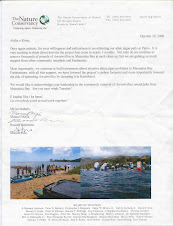

There was much more sweet potato (ʻuala) farming in the ahupua'a of Maunalua in ancient Hawai'i, and little or no kalo production due to the dryer environment of Maunalua. If an inland or ma uka type Hawaiian cultural & agricultural learning center were to be located somewhere in Maunalua in the future for the education of our keiki, community members and others, wouldn't it be befitting to have a focus or concentration on a crop that has much historical significance to this area such as ʻuala (see keiki ʻuala piko vines in pictures above).
Other wetter type ahupua'a in the islands revolve there activities & learning around kalo rightly so if that was a known location for kalo in the past and the environment is suitable for kalo growing. Maunalua could be a very unique and different learning place with the emphasis on ʻuala cultivation in which the valleys of Maunalua were once known for.
ʻUala was the second most abundant starch in the diet of the people of Hawai'i after kalo. There is rightly so, much emphasis on kalo today for many reasons including the religious & spiritual reasons which I will not go into in this post. The point being made here is that a place to learn about ʻuala cultivation and it's importance in old Hawai'i as an emphasis and in addition to other Hawaiian cultural and agricultural topics would be ideal in Maunalua. ʻUala cultivation is much less common to see and hear about as compared to kalo throughout the islands. Maunalua could play an important part in making ʻuala visible again in front of the community and in also developing a greater appreciation among many more of us for this important & culturally significant food item of old.
Although, Maunalua has been exposed to over-development of housing in recent years, there are still lands available where a learning center & possible community kitchen could be located that could allow for teaching of Hawaiian culture, cultivation & agricultural methods, proper ahupua'a based land usage & management, community gatherings and farmers open markets for the existing farmers and agricultural businesses in our community.
Maybe this is just the concept that will assist in keeping agriculture in our community for the long haul, bring the community closer together and help keep our last remaining pockets of rural Hawai'i alive and well in Maunalua.
Click here to learn more.

























































